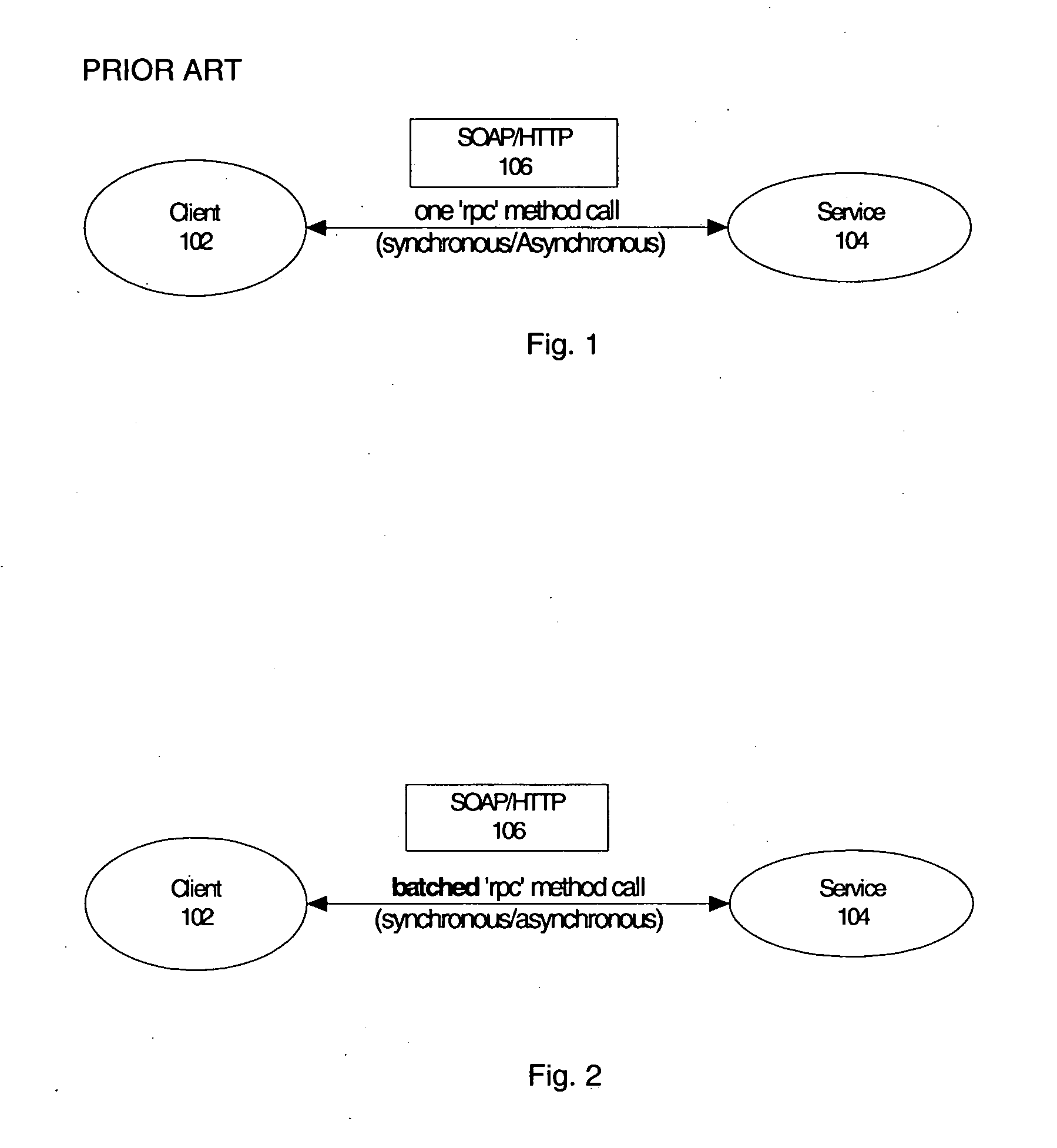Method and apparatus for processing service requests in a service-oriented architecture
a service-oriented architecture and service-oriented technology, applied in multi-programming arrangements, program control, instruments, etc., can solve problems such as high performance, and achieve the effect of reducing the latency problems of existing protocols
- Summary
- Abstract
- Description
- Claims
- Application Information
AI Technical Summary
Benefits of technology
Problems solved by technology
Method used
Image
Examples
Embodiment Construction
[0033] The present invention contemplates a service request batching framework for a client and server in a service-oriented architecture to better deal with the increased latency associated with the service call, by batching up the requests. This framework provides a client-side application programming interface (API) and a client-side request-batching engine to batch up the calls. The server-side framework provides facilities for service request disassembly, identification, mapping and dispatching. This framework uses SOAP (Simple Object Access Protocol) as the transport messaging protocol for the service binding. A workflow process to manage the sequential and parallel execution of service calls based on the client's preferences and / or polices is also contemplated.
[0034]FIG. 1 shows the client-server interaction in a conventional SOAP RPC implementation, without batching. As shown in the figure, a client 102 interacts with a service provider (or simply “service”) 104 over a netw...
PUM
 Login to View More
Login to View More Abstract
Description
Claims
Application Information
 Login to View More
Login to View More - R&D
- Intellectual Property
- Life Sciences
- Materials
- Tech Scout
- Unparalleled Data Quality
- Higher Quality Content
- 60% Fewer Hallucinations
Browse by: Latest US Patents, China's latest patents, Technical Efficacy Thesaurus, Application Domain, Technology Topic, Popular Technical Reports.
© 2025 PatSnap. All rights reserved.Legal|Privacy policy|Modern Slavery Act Transparency Statement|Sitemap|About US| Contact US: help@patsnap.com



